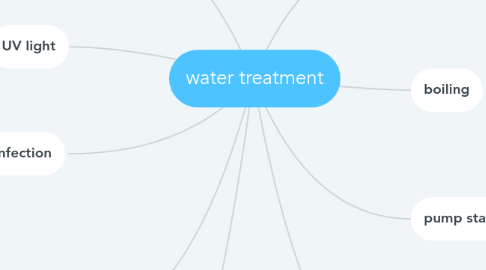water treatment
by feiz noon


1. Disillation
2. UV light
2.1. ultraviolet purification itself is not enough to purify water down to drinking water purpose.
2.2. un radiation is only effective for treating bacteria and viruses
2.3. UVlight does not work to eliminate contaminants such as chlorine, heavy metals and volatile organic compounds
3. Solar Disinfection
4. filtration
4.1. the water is sprayed onto specially-prepared layers of sand and gravel called filter beds
4.2. the water is passed into a sedimentation tank. aluminium sulfate is added to clump tiny particles together to make larger particles, which settle out more easily.
4.3. the water is then passed through a fine filter, such as carbon granules, to remove very small particles.
4.4. use of filter cartidges
4.4.1. contains silver to kiss bacteria
4.4.2. carbon to absorb impurities, eg chlorine
4.4.3. ion exchange resins to often the water, and remove heavy metal ions ( such as lead ions)
5. seawater
5.1. pure water can be produced from seawater by distillation
5.2. disadvantages
5.2.1. it is expansive because large amount energy are needed to that the seawater
5.2.2. it increases that use of fuels - which are non-renewable resources
6. chemical
6.1. disinfecting tables
6.2. bleach
6.3. chlorine
6.3.1. chlorine is added to drinking water to sterilise it. the chlorine kills microbes - including microbes that cause potentially-fatal diseases such as typhoid cholera and dysentery
7. boiling
8. pump station
8.1. set precast station
8.2. backfill
8.3. piping
8.4. electricacl
9. fluoride
9.1. advantages
9.1.1. fluoridated water can improve dental health by reducing tooth decay
9.2. disadvantages
9.2.1. has been linked to tooth mottling
9.2.2. forces people to consume fluoride when they drink tap water.

